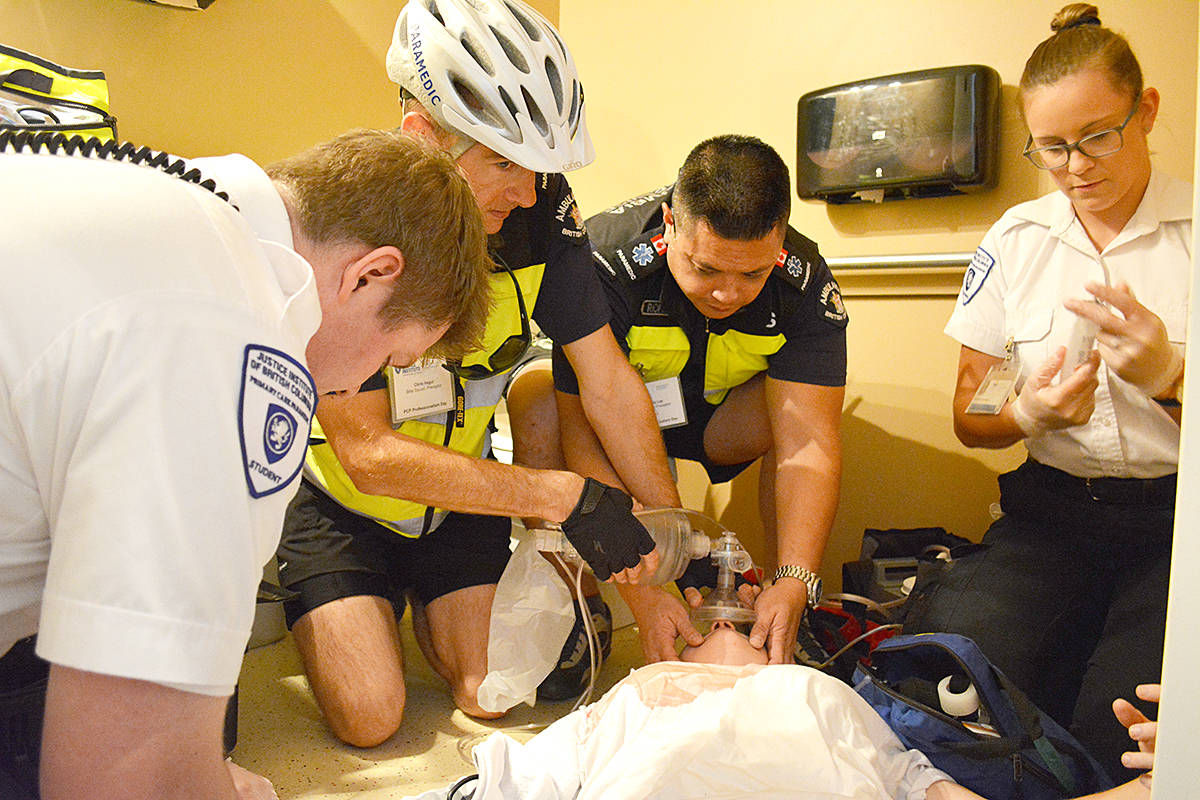Too many men working in trades are overdosing on opioids, says a chief medical health officer in British Columbia who wants the industry to be involved in identifying interventions that could save lives.
Dr. Victoria Lee of Fraser Health said men between the ages of 19 and 59 are disproportionately affected by a hidden epidemic that’s shrouded in secrecy among those too ashamed to get help.
She said men who are injured on the job may be ensnared into dependence on illicit substances after being prescribed pain medication.
“Some people start to self-medicate. It can be for physical and emotional reasons as well,” Lee said in an interview.
“There’s a huge amount of stigma around using (illicit) substances so when you combine that with the fact that it’s not socially acceptable for men to be vulnerable it makes it very difficult for men in those situations to ask for help.”
Men are also unlikely to use health services unless absolutely necessary so can’t access resources and often end up dying alone, said Lee, who works for a health authority that provides services to more than 1.8 million people in communities across a large area stretching from Burnaby to White Rock to Hope.
Fraser Health is planning a workshop next month for employees, employers and trades representatives to explore interventions that would help men who don’t reach out when they’re struggling with substance-use issues, she said.
The B.C. Coroners Service said nearly 82 per cent of the 780 people who fatally overdosed in the province between January and June were men. The opioid painkiller fentanyl was detected in nearly 80 per cent of overdose deaths between January and May.
Tom Sigurdson, executive director of the BC Building Trades Council, said he was especially troubled by the death of an ironworker who was injured on the job and died after buying street drugs.
“It was late, it was a weekend, it was easier to go to the street and, unfortunately, the drug that he purchased wasn’t clean and he was found a day or two later. He was found dead,” said Sigurdson, who speaks for the council that represents unionized construction workers.
Sigurdson said the ironworker was in his 20s and had returned to work.
“I don’t know if the young fellow ever was aware of the emotional crisis that he was going through. He was physically addicted and in constant discomfort from his injury.”
Sigurdson said the council would participate in the Fraser Health workshop with other industry representatives in order to assist trades workers.
Leslie McBain, founder of Moms Stop the Harm, a support group for families struggling with an addicted relative or an overdose death, said stigma is a huge issue among illicit drug users but families have also carried the burden of shame.
McBain, whose 25-year-old son Jordan died of an opioid overdose in 2014, is an advocate for policy change and has spoken out about the decriminalization of drugs.
She said the Ministry of Mental Health and Addictions contacted her last week to participate in a public awareness campaign.
“I’m hoping that it’s around stigma,” she said.
McBain, who was recently hired by the B.C. Centre on Substance Use to support families as they navigate the medical and mental health system, said she expects to head the group’s first meeting next week.
“Stigma is definitely one of the pillars of what our work will be,” she said, adding she spoke with former federal health minister Jane Philpott several months ago about the importance of addressing stigma because the opioid crisis is “tearing families apart.”
“I was saying we need a federal strategy to combat stigma because until we educate the Canadian population on what addiction is, how it presents, why it’s happening, then we’re not going to get sympathetic or courageous legislators,” McBain said.
“You have to normalize the conversation and also help people to understand that addiction is a health issue. It is not a moral failing.”
— Follow @CamilleBains1 on Twitter.
The Canadian Press



